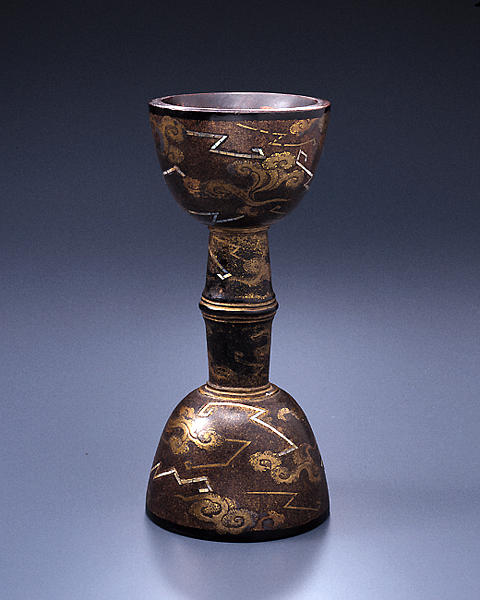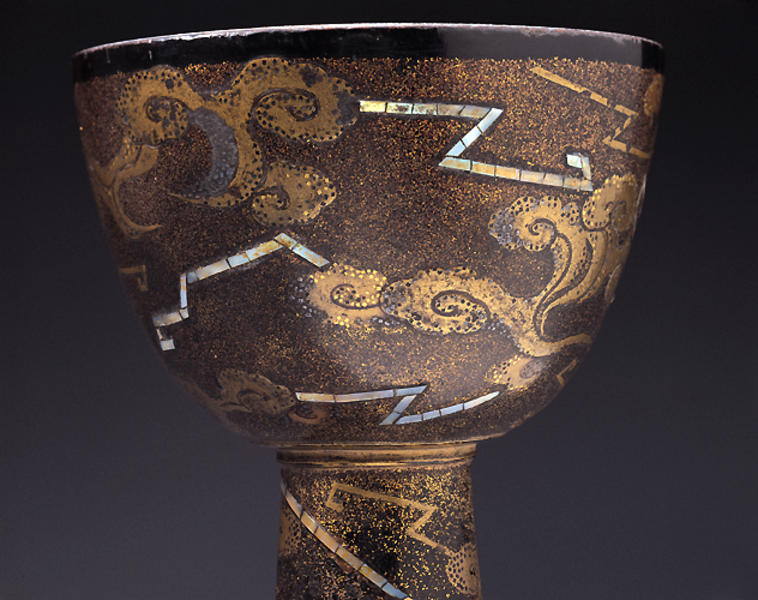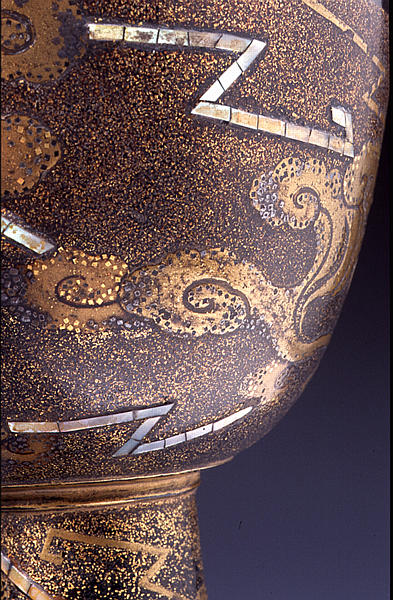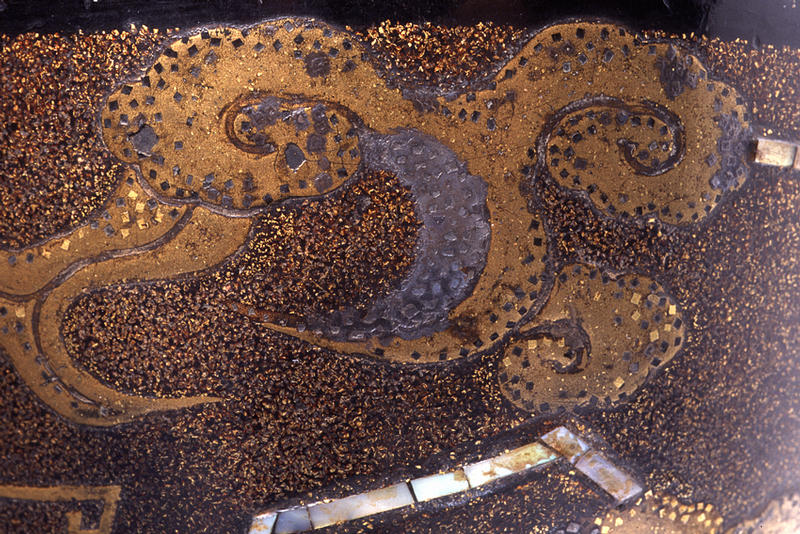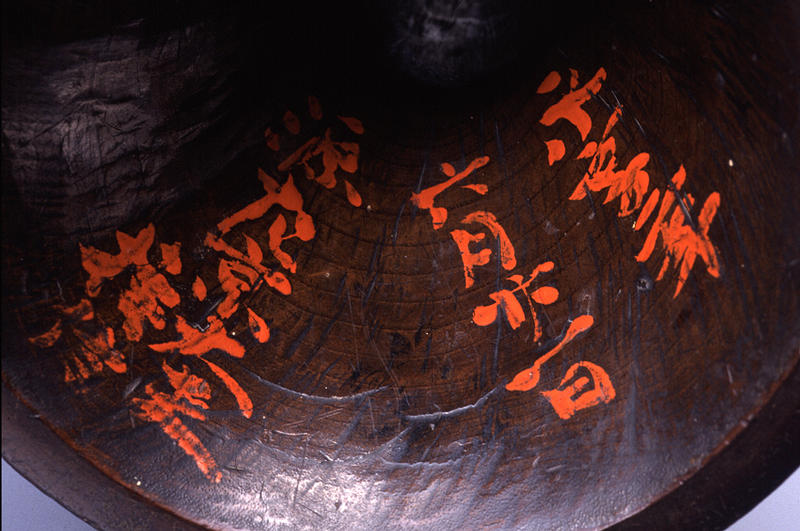Drum Cylinder with Clouds and Lightning Design
- Muromachi period
- 15c
- Mother-of-pearl, gold takamaki-e and cut gold leaf
- H-27.5 D-13
- Dedicated to Chikubujima shrine in Shiga pref.
Catalogue Entry
Muromachi period, 15th century
Height, 27.5cm; mouth diameter, 12.5cm
A large drum cylinder decorated with lightning bolts in mother-of-pearl and clouds created in gold takamakie and cut gold leaf.
The inscription on this drum body indicates that this drum was presented to the Chikubushima Shrine on the 21st day of the 6th month of 1430 (Eikyo 2) by Isshiki Sakyo-no-daibu Mochinobu, a close associate of Yoshinori, the 6th Muromachi shogun.
This drum cylinder is also accompanied by two letters written by Oda Nobunaga which explain the relationship between Nobunaga and this drum and further heighten the historical importance of the work.
In the letter written by Nobunaga to Isono Kazumasa, Nobunaga states that he has seen the famous "green leaf " flute of Chikubushima. He asks for a thorough study of the circumstances of the donation of this flute and its accompanying smaller flute to Chikubushima.
In a letter addressed to Yamanaka, who was the So of Chikubushima, and sealed with Nobunaga's red ink seal, Nobunaga states that the "green leaf" flute has arrived. Nobunaga comments on what a truly fine treasure it is. He states that he will keep it close at hand for awhile and then return it to Chikubushima. Then he asks for details on the donor of the flute to Chikubushima and the circumstances of its donation. Nobunaga mentions that he has heard of the small drum cylinder owned by Shizuka and decorated with a thunder motif makie. He states that he would definitely like to see this drum. Nobunaga ends the letter by stating that he would seek Isono's permission and thus hoped that Chikubushima would approve the viewing.
It is likely that the present drum cylinder is the small drum with thunder makie patterns mentioned in this letter. AH
Bibliography :
Haino Akio, "Raiun makie kodo," Gakuso Vol. 5, Kyoto National Museum, 1983.
KAZARI Catalogue Entries
Drum Cylinder with Thunder and Lightning KAZARI Catalogue Entries
Adorned with a pattern of lightning in mother-of-pearl and raised maki-e lacquer (takamaki-e), in addition to clouds in raised maki-e and cut gold (kirikane), this sumptuous hand drum is said to have been owned by the twelfth-century shirabyōshi dancer Shizuka Gozen. It is known by the name of “Hatsune no tsuzumi,” or “First Sound Drum.” An inscription in red lacquer inside the drum cavity indicates that the piece was given to Chikubushima Shrine at Lake Biwa by the courtier Isshiki Mochinobu (?-1434) in 1430 (Eikyo 2).
The drum is accompanied by two documents authored by Oda Nobunaga (1534-1582) that tell how the warlord saw the drum after seeing the famous flute named“Aoba” (Fresh Leaves), which had been donated to Chikubushima shrine. Although the maki-e technique and date of the inscription postdate the time of Shizuka Gozen, we learn how, during the Tensho era(1573-92), the piece was handed down as a relic of the legendary female dancer.
Made from hard and heavy cherry wood, the inside of the drum is constructed to produce distant-sounding tone, a feature of instruments used in outdoor performances. The dimensions of the piece’s interior reflect the characteristics of hand drums used in takigi no, outdoor noh performances held at night and illuminated by torchlight. On the basis of this correspondence in size, Kato Hiroshi has compared the drum with large drums (otsuzumi, or okawa) used in noh. He argued that, since the leather of otsuzumi needed to be completely dry during performances-a feature that differs in this work-the drum was likely used as a hand drum in outdoor performances and represents a rare example of hand drums prior to their standardization in size.
